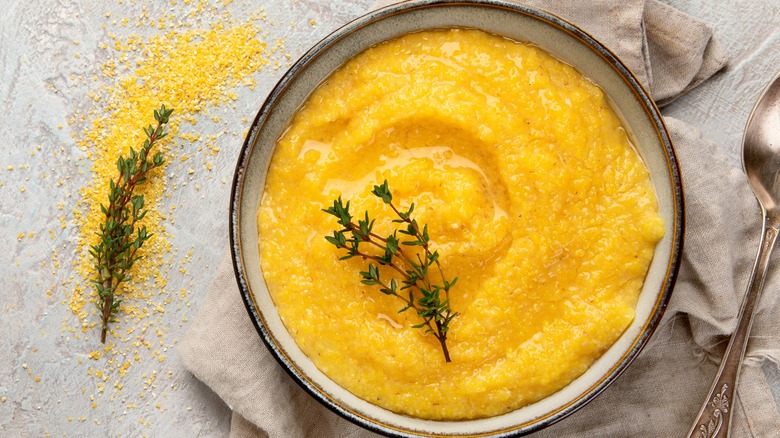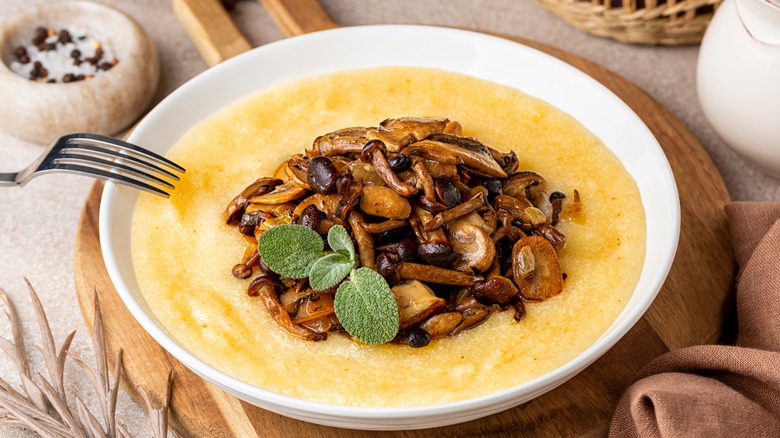How To Store Leftover Polenta And Retain Its Moisture
Polenta is a versatile staple in many kitchens thanks to its ability to soak up other flavors. But what do you do when you have leftovers and want to make sure it retains its moisture? Polenta is a porridge similar to grits made of coarsely ground corn — more specifically, flint corn. Because it uses this variety of corn, it is less creamy than grits, which are made from dent corn. That's why taking care to store it properly is key to enjoying leftovers later.
Ideally, you'll want to allow the leftover polenta to cool to room temperature, then transfer it to an airtight container. Store it in the refrigerator for up to three days. To freeze polenta, wrap it tightly in plastic wrap or aluminum foil, or place it in a freezer-safe container. It can last for three months in the freezer without compromising quality.
While polenta can be stored, it's important to know when it has gone bad. Signs of spoilage include an off odor, mold growth, and an unusual texture. If your leftover polenta develops an unusual or foul smell, it's best to discard it. Visible mold or discoloration on the surface of the polenta is a clear indication that it should not be consumed. If the polenta has become excessively slimy, mushy, or grainy, it's past its prime.
How to keep polenta moist while reheating
Reheating leftover polenta while retaining its moisture is an art. For the best results, reheat polenta on the stovetop. Add a bit of liquid, such as water, milk, or broth, to the polenta to restore its creamy texture. Heat over low to medium heat, stirring constantly until it reaches the desired consistency. If you're short on time, you can reheat polenta in the microwave. Place it in a microwave-safe container, cover it with a damp paper towel or microwave-safe lid to prevent drying out, and heat in short intervals, stirring in between.
To enhance the flavor and maintain moisture, add a small amount of butter or heavy cream while reheating. This will not only add richness but also help prevent dryness. Patience is key when reheating polenta. Low and slow heating ensures that the heat is evenly distributed, preventing overheating and potential drying. Whether on the stovetop or in the microwave, stir the polenta frequently to ensure even reheating and consistent texture. With reheated polenta, you can use it in casseroles, as a creamy base for eggplant ragout, or mixed into a breakfast hash.
By following these tips, you can extend the life of your delicious polenta creations and enjoy them even days later. So, the next time you whip up a batch of creamy polenta, savor the leftovers by storing and reheating them like a pro.

